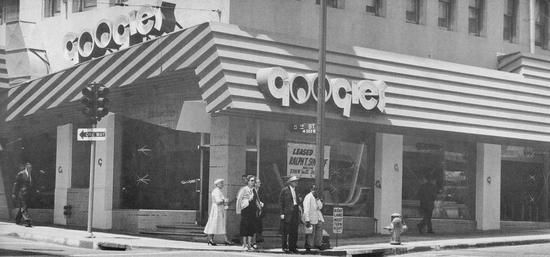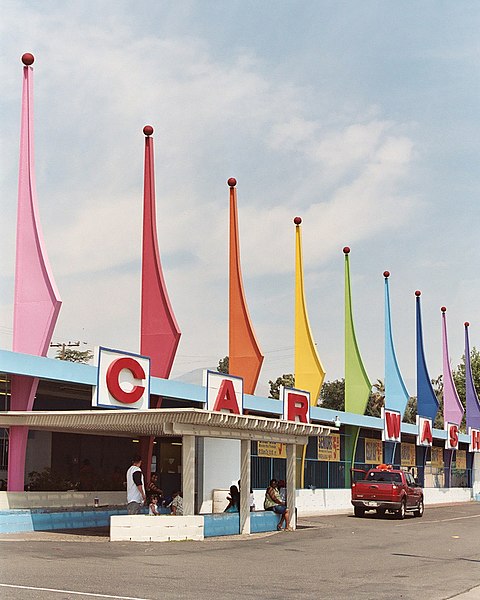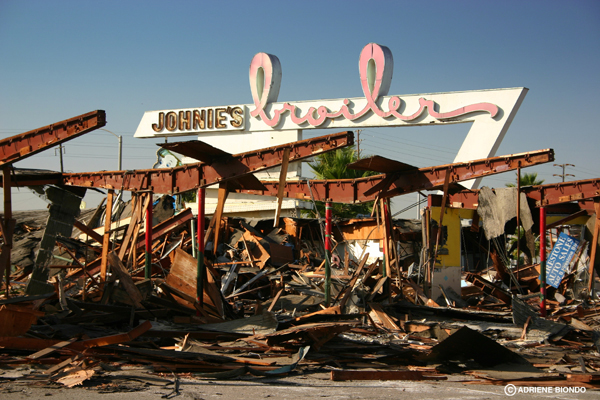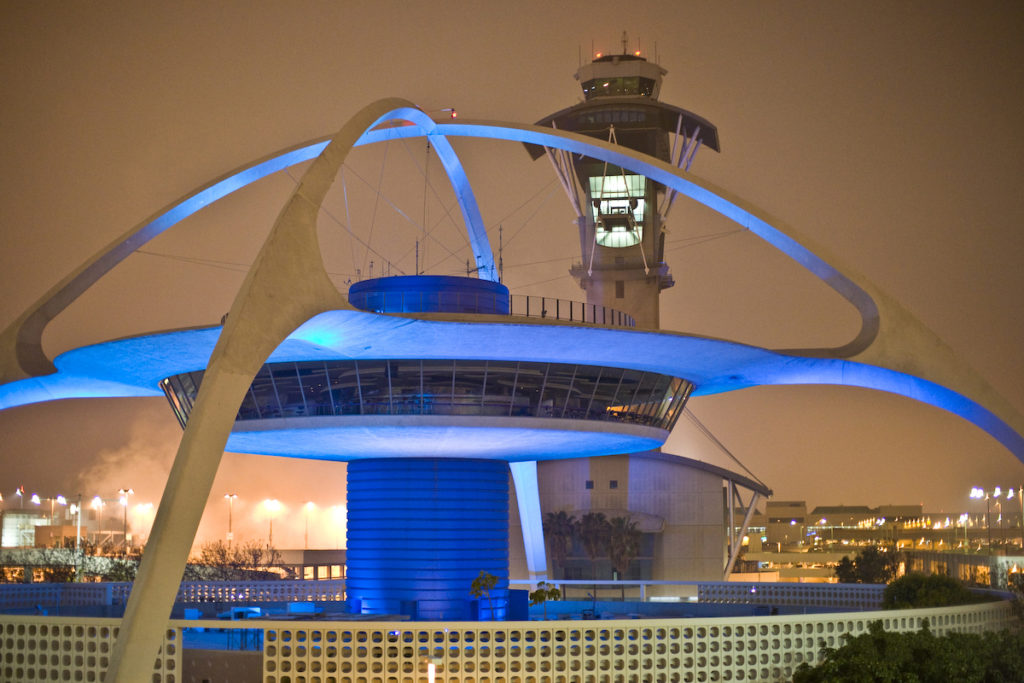A rather unique style, Googie architecture originated in the 1950s and 1960s. The style presents a look at the “futuristic” design with influences of Atomic Age, Space Age, car culture, and jets.
Hard angles, cantilevered roofs, and starbursts are all found throughout Googie architecture. The building starting it all displays all three; Googie’s, a coffee shop located in West Hollywood and designed by John Lautner.
When it was first introduced, the word “Googie” was actually a pejorative first used by Douglas Haskell, a House and Home architecture critic. Originally, Googie equaled tacky, but today, this unique architectural style is admired in Southern California.
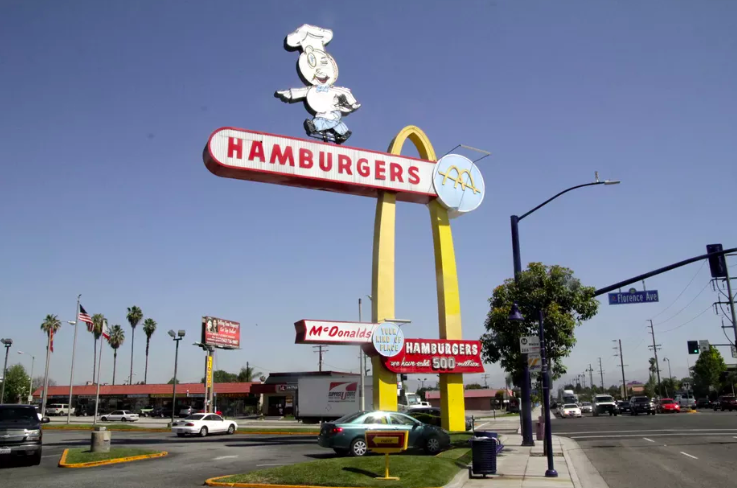
The boom of car transportation led to the Googie architectural style taking off. Googie designs were created to capture the eye of drivers and get them to slow down or even stop. In fact, McDonald’s embraced Googie architecture for this very reason.
It’s not easy to find a beautifully-designed Googie building today. Many of the businesses embracing this style closed years ago and several have been remodeled to fit modern times.
However, there are some beautiful examples of Googie architecture remaining throughout Southern California. Let’s look a bit closer at a few of the most famous examples of Googie architecture still available today.
Bob’s Big Boy Broiler
Originally built in 1958 and opened as Harvey’s Broiler, this beautiful Googie building went through several incredible challenges to be preserved and reconstructed. It was renamed Johnie’s Broiler in 1968 and later became Bob’s Big Boy Broiler in 2009.
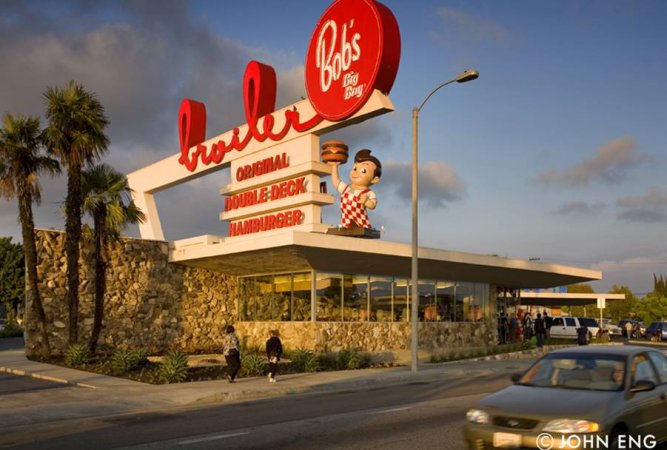
When it first opened, the drive-in restaurant was the largest found in all of Southern California. It was designed by Paul B. Clayton as a restaurant and coffee shop combination with a 65-foot-long sign.
From 1968 through 2001, the building was the home of Johnie’s Broiler. It became the home of a car dealership for several years after before an unpermitted bulldozer demolished a portion of the building, illegally, without even disconnecting the utilities.
The Big Boy franchise operator stepped up to lead the revival for the building and help recreate what was lost.
Chips
Found on Hawthorne Boulevard in Hawthorne, California, Chips is one of the best examples of Googie architecture from the 1950s. Very little has changed about this beautiful building since it was opened in 1957. A small patio was added, but the rest remains the same including the large angular letters found at the top of the building.
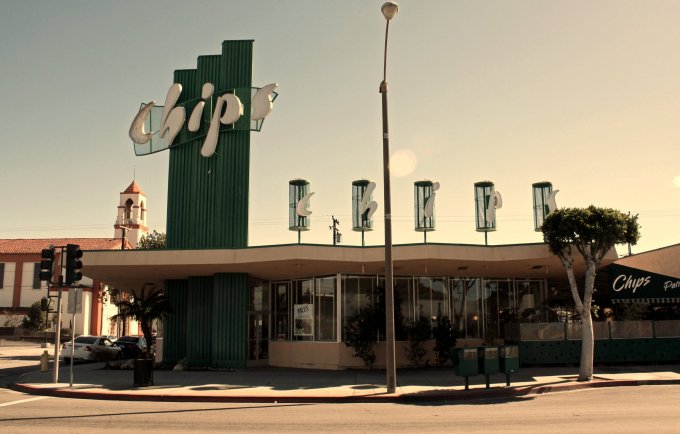
The building features concrete walls, a jutting roof, and a steel-beam pylon sign. Harry Harrison is responsible for creating this beautiful Googie diner near LAX. With the addition of the patio, the restaurant now offers both indoor and outdoor seating.
Union 76 Station
Maybe the most famous Googie building left, Union 76 Station in Beverly Hills offers a beautiful example of this architectural style. The boomerang roof is rather famous and offers a fun, space-age design. Renowned architect Gin Wong is responsible for the design of this gas station.
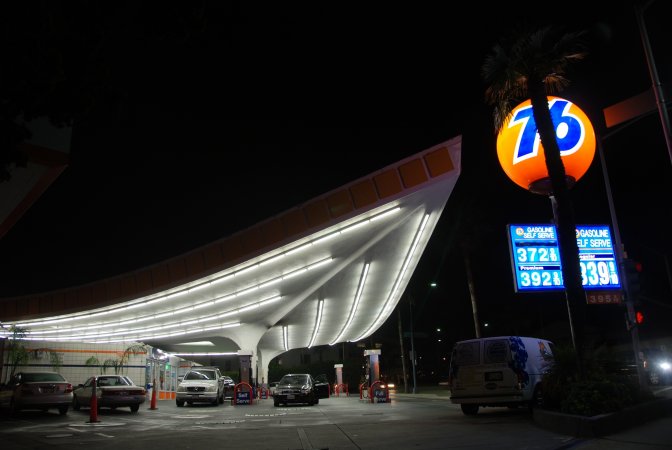
The gas station opened in 1965 with the original Union 76 symbol: a twirling orange ball with “76” painted in blue. The sign would fly high above the road and was designed to attract drivers as they made their way down Crescent Drive.
LAX Theme Building
A space-age design offering a unique look at Googie architecture in Southern California, the LAX Theme Building was renovated in 1997. A $4 million renovation brought the building back to life with Walt Disney Imagineering helping with the design of the lights.
A restaurant called Encounter took over the space after the renovation, but closed and doesn’t plan to reopen. LAX isn’t sure what to do with the building as it currently isn’t occupied.
The Theme Building offers an iconic choice with a UFO-shaped restaurant space. It’s an amazing sight during the night with the beautiful lights making the building stand out.
McDonald’s
The oldest surviving McDonald’s location, which was completed in 1953, offers a beautiful example of Googie architecture. It’s found on Lakewood Boulevard in Downey, CA and offers a look at why McDonald’s embraced the Googie design movement.
The large yellow arches and the huge sign that says “Hamburgers” and features Speedee the Chef offered the perfect combination to easily attract drivers as they passed. Today, a museum is attached and offers some of the old plastic toys and footage from the original CEO.
The building was designed by Stanley C. Mestion and was restored in 1996. It still features the old walk-up window, massive golden arches, and 60-foot Speedee the chef sign. However, the renovated version also offers wireless access and a few other modern features.
If you visit this specific McDonald’s location, you’ll be able to get all the normal meals you love, but the employees will be dressed in 1950s-style uniforms including the old paper hats.
Norms
The oldest of the designs from Lewis Armet and Eldon Davis still in operation, Norms is found in West Hollywood. This beautiful Googie building includes a sign with elongated diamond-shaped trusses, along with a sloping roof and an open stretch of glass looking out on the Boulevard.
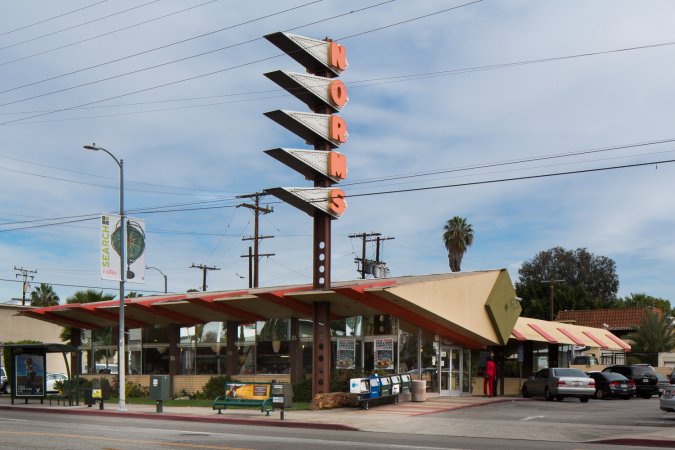
The building was in danger of redevelopment, but the Los Angeles Cultural Heritage Commission made sure the iconic features were protected in 2015.
Many other Googie designs are found all throughout Southern California including:
- Pann’s – 6710 La Tijera Boulevard in Los Angeles
- Covina Bowl – 1060 West San Bernardino Road in Covina
- Algemac’s Coffee Shop – 3673 San Fernando Road in Glendale (only the facade remains)
- Bob’s Big Boy Burbank – 4211 West Riverside Drive in Burbank
- Driftwood Dairy – 10724 Lower Azusa Road in El Monte
- Five Points Car Wash – 12604 Whittier Boulevard in Whittier
- Johnnie’s Coffee Shop – 6101 Wilshire Boulevard in Los Angeles
- Mel’s Diner – 14846 Ventura Boulevard in Sherman Oaks
While the largest collection of Googie architecture is found throughout Southern California, some examples of this beautiful style can also be found in a few other locations including Miami Beach in Florida, Las Vegas, and Wildwood in New Jersey.
If you’re on the hunt for amazing examples of Googie architecture in Southern California, make sure to stop by all the options found in this list. You’ll likely spot many other beautiful buildings found nearby these locations.
